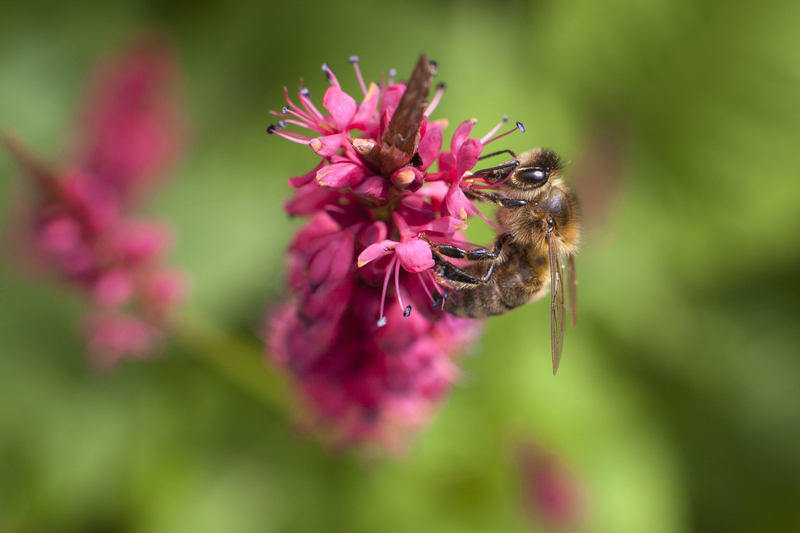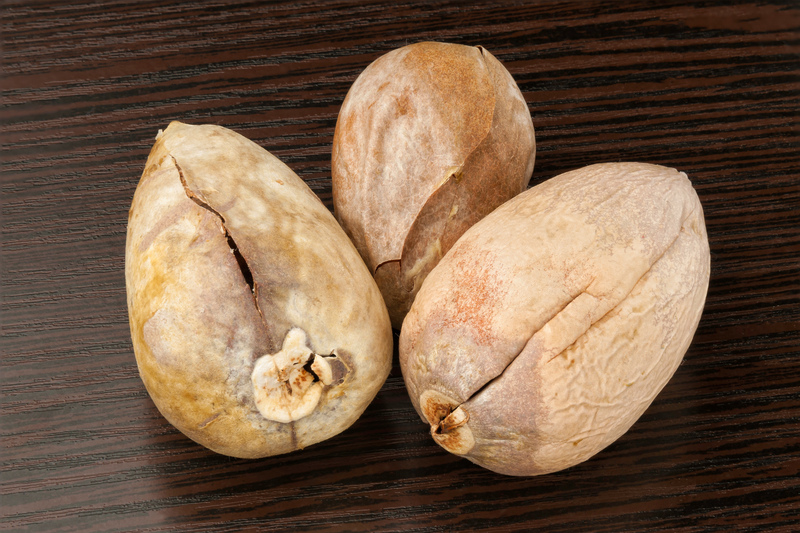Expert Tips to Protect Your Lawn from Summer Drought Stress
Summer brings sunshine and warmth, but for homeowners, it also introduces the annual challenge: protecting your lawn from summer drought stress. When rain becomes scarce and temperatures rise, turfgrass can struggle. Luckily, with the right strategies and expert insights, you can keep your lawn healthy and vibrant even during the driest months. In this comprehensive guide, we'll share expert tips to safeguard your lawn during drought, offering proven solutions for maintaining lush green grass throughout the summer season.
Understanding Summer Drought Stress in Lawns
Before implementing lawn protection methods, it's essential to understand what causes summer drought stress and how it impacts your grass. Drought stress occurs when there's a prolonged lack of water, intense sunlight, and high temperatures, causing your lawn to lose more moisture than it receives.
Signs Your Lawn Is Suffering from Drought Stress
- Grass blades turning blue-gray
- Footprints remain visible after walking
- Slowed growth or browning patches
- Soil feels dry and hard
Recognizing these symptoms early enables you to take prompt action and minimize drought damage to your turfgrass.

Expert Lawn Care Tips to Minimize Summer Drought Damage
Protecting your lawn from summer's intense heat and dryness requires a combination of proper watering, maintenance, and strategic planning. Below are essential, research-backed recommendations from turfgrass specialists and horticulturists.
1. Water Wisely and Efficiently
Efficient watering is the cornerstone of lawn drought protection. Overwatering wastes resources and under-watering stresses your turf. Here's how to get it right:
- Water Early in the Morning: Watering your lawn between 4 a.m. and 9 a.m. ensures moisture penetrates before the heat causes evaporation.
- Deep, Infrequent Watering: Give your lawn a good soaking to a depth of 6-8 inches, about 1-1.5 inches per week, instead of daily shallow watering.
- Use Smart Irrigation Systems: Install moisture sensors or smart sprinkler controllers to avoid over-watering and conserve water.
- Check for Even Coverage: Make sure that sprinklers evenly distribute water across your lawn to prevent dry patches.
2. Mow Correctly to Reduce Stress
Your mowing routine can significantly impact your grass's drought resilience. Follow these recommendations:
- Raise the Mower Blades: Only trim the top third of your grass, leaving it at a height of 3-4 inches. Taller grass shades the soil and reduces evaporation.
- Keep Mower Blades Sharp: Dull blades tear grass, making it more susceptible to drought and disease.
- Leave Grass Clippings: Mulch clippings to add nutrients and shade the soil, retaining precious moisture during dry spells.
3. Build Soil Health with Aeration and Amendment
Healthy soil is the foundation of drought-tolerant lawns. Take these expert-recommended steps:
- Aerate Compact Soil: Aerating in spring breaks up compacted soil, improving water penetration and root development.
- Add Organic Matter: Work compost or organic topdressing into the soil to boost moisture retention and microbial activity.
- Test Your Soil: Conduct a soil test to check for nutrient deficiencies and correct imbalances for stronger turfgrass growth.
4. Fertilize Appropriately for Summer Stress
Proper fertilization supports lawn health, but timing and product selection matter in dry weather. Here's what experts advise:
- Apply Light, Balanced Fertilizer: Use a slow-release, balanced fertilizer in early spring and avoid heavy fertilizing during peak drought.
- Avoid Nitrogen Overload: Excessive nitrogen promotes rapid growth, increasing water demand and vulnerability to heat stress.
- Opt for Organic Fertilizers: Organic products feed soil microbes, fostering deeper, stronger root systems over time.
5. Choose Drought-Resistant Grass Varieties
If you're starting a new lawn or overseeding, opt for grass cultivars known for their drought tolerance. Some top-performing grass species for dry climates include:
- Bermudagrass
- Zoysiagrass
- Tall Fescue
- Buffalograss
- Fine Fescue blends
Consult local extension offices or turf specialists to select the best grass type for your region's climate and soil.
6. Mulch Around Trees and Landscape Beds
Mulching isn't just for gardens; it also benefits your lawn's micro-climate by conserving soil moisture and lowering temperatures at the root zone. Here's how to do it right:
- Apply a 2-3 inch Layer: Spread organic mulch such as shredded bark, compost, or pine straw around trees, shrubs, and flowerbeds bordering your turf.
- Keep Mulch Away from Stems: Leave a gap around the base of plants to prevent rot.
7. Keep Lawn Traffic to a Minimum
During drought conditions, your grass is more vulnerable to damage. Minimize stress by:
- Avoiding Heavy Foot Traffic: Keep pets, children, and equipment off parched areas to prevent compaction and wear.
- Rotating Activities: Move swing sets, play equipment, and grills to distribute wear more evenly.
Additional Tips to Protect Your Lawn During Heat Waves
For extra tough summers, implement these bonus techniques to bolster your lawn's defenses against drought:
Install a Rain Barrel or Water Catchment System
- Collect Rainwater: Use rain barrels to store runoff for later irrigation, helping conserve municipal water and ensuring your lawn has a backup supply during dry spells.
Spot-Treat Weeds and Pests
- Remove Weeds Promptly: Weeds compete with your grass for moisture and nutrients, so pull them early and often.
- Control Insects: Monitor for grubs and other pests known to damage roots and worsen drought stress; treat as needed using eco-friendly methods.
Don't Overwater After Rains
- Let Nature Work: After a rainstorm, skip scheduled sprinkling to avoid over-saturating soil and encourage deep root growth.
Why Lawns Go Dormant During Drought--and Why That's OK
It's natural for cool-season lawns to enter a period of dormancy during prolonged drought. During dormancy, grass turns brown but isn't necessarily dead. Here's what you need to know:
- Don't Panic if Grass Turns Brown: Most types of turfgrass become dormant to conserve energy and survive dry conditions.
- Minimize Stress: Avoid heavy fertilization or mowing during this time, and provide minimal irrigation (about half an inch every 2-4 weeks) to prevent plant death.
- Grass Will Recover: Once temperatures cool and rain returns, dormant grass typically regreens and resumes growth.
Long-Term Strategies for a Drought-Resistant Lawn
Building a lawn that stands up to summer drought isn't just about crisis management--it's about adopting smart landscaping practices year-round. Explore these advanced solutions:
Install Drip Irrigation or Subsurface Watering Systems
- Improve Efficiency: Drip and subsurface drip systems deliver water directly to roots, drastically reducing evaporation and runoff.
- Target Trouble Areas: Use targeted irrigation in especially dry or sloped sections to promote even watering.
Transition to a Water-Smart Landscape
- Replace Part of Your Lawn: Convert high-maintenance turf to native groundcovers, ornamental grasses, or drought-tolerant plantings.
- Design with Permeable Hardscaping: Replace some lawn with pavers, gravel walkways, or mulched beds to reduce water demand and improve drainage.
Re-Seed with Improved Turfgrass Cultivars
- Choose Grass with Proven Drought Tolerance: New bred varieties often show much improved resistance to heat and drought stress compared to older cultivars.
- Overseed in Early Fall: Overseeding with resilient grasses helps thicken your lawn's turf just before winter and readies it for future summer stress.
Common Mistakes to Avoid When Protecting Lawns from Drought
Even with the best intentions, it's easy to make errors that can worsen drought stress. Be sure to avoid these pitfalls:
- Overwatering: Applying too much water not only wastes resources but can also lead to shallow roots, fungal disease, and thatch buildup.
- Excessive Fertilization: Fertilizing during dry spells can 'burn' grass and ramp up growth just when water is scarce.
- Cutting Grass Too Short: Scalp mowing exposes soil to the sun and amplifies moisture loss, putting your lawn at risk.
- Ignoring Compaction: Avoid neglecting soil aeration. Compacted soil resists water, starving roots of moisture and air.

Frequently Asked Questions About Lawn Drought Stress
How often should I water my lawn during a heatwave?
Expert advice: Water your lawn deeply once or twice per week, rather than brief, daily watering. Aim for about 1 inch of water per week, and adjust based on rainfall and soil type.
Is it better to let my lawn go dormant during extreme drought?
Yes--letting cool-season grasses go dormant is a safe strategy during severe water shortages. Light irrigation (0.5 inches every few weeks) may help roots survive.
Can I revive a completely brown lawn after a drought?
Most lawns rebound when cooler weather and regular rainfall returns. *If grass crowns and roots are still alive*, the turf will green up again with time, patience, and gentle care.
Are synthetic lawns better for drought areas?
While artificial turf eliminates water use and maintenance, it may raise ambient temperatures and lacks the environmental benefits of live grass--such as natural cooling, carbon sequestration, and habitat support.
Conclusion: Achieve a Beautiful, Resilient Lawn All Summer
Protecting your yard from summer drought stress is easier when you apply a blend of mindful irrigation, strategic mowing, smart fertilization, and thoughtful landscaping. By fostering deep roots, improving soil health, and selecting resilient grasses, you'll empower your lawn to survive--and thrive--through even the hottest, driest months.
*Remember:* with a little planning and these expert drought lawn care tips, you can enjoy a green oasis all summer long--no matter how harsh the heatwave!
Ready to drought-proof your lawn? Follow these strategies, and you'll protect your curb appeal, conserve water, and enjoy a lush turf season after season. For customized advice, consider consulting a local lawn care professional or university extension service.
If you found these expert tips to protect your lawn during drought helpful, share this guide with fellow lawn enthusiasts and bookmark it for future reference. Stay green!



